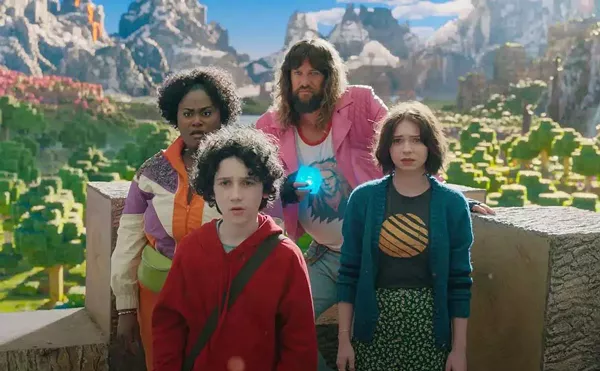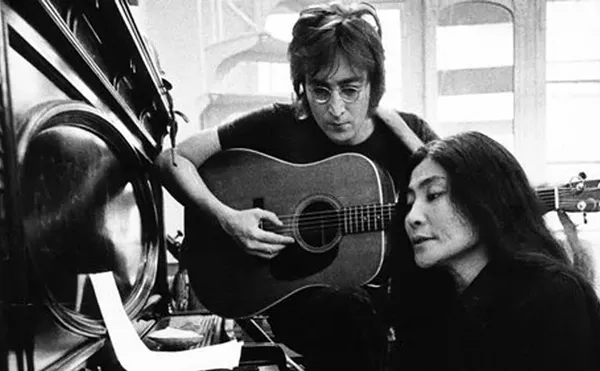The first time I saw Jean-Luc Godard’s Breathless, I was 15. It was a revelation of the highest order. Everything about it was stunning – the handheld camera work in the sexy streets of Gay Paree, the jazzy score, the insouciant mischief-making of Jean-Paul Belmondo, the blond naïveté of Jean Seberg and, of course, the stylistic cheek of the director himself. The film was all energy, from start to finish, breaking all the conventions of Hollywood and all points east and west.
All these years I’ve waited to once again live that exquisite feeling. All these years my hopes have been dashed by the ascendance of big-budget black-box nonsense such as Star Wars, Wild Wild West and The Matrix, among countless others. So imagine my delight as I sat watching Run Lola Run and my skin began tingling with goosebumps. Girl with flaming red hair and La Femme Nikita attitude takes phone call from frantic boyfriend – girl hits the pavement running – girl keeps running until clock strikes 12. Repeat three times. That’s the film.
Critics, as is their wont, have been trying to saddle the film with various forms of cultural gravitas. To wit: Here is the new post-Wall, MTV Germany in all its vibrant Day-Glo iconoclasm, on full display as opposed to the dour black-and-white humanism of Berlin circa Wings of Desire and 99 Luftballons.
Or here is hipster existential angst, most recently seen in Go and Sliding Doors, at its smartest. True, in each of the three repetitions of the same vignette, the director changes minute parts of plot and, thus, the whole changes. But does this leave us pondering the profound caprices of life while we sip lattes at a coffeehouse as Jewel wails earnestly in the background?
No dice. Lola is nothing more and nothing less than a formalist exercise in old-school montage. Director Tom Tykwer has incorporated a bit of multimedia trickery, favored by Ollie Stone (see Natural Born Killers), such as animation, 35mm stills and video camcorder cutaways, but they’re brief and well-timed. And timing is everything in a film that lasts no longer than 81 minutes.
Yet, how time flies. Indeed, even though the film is scored with frenetic techno-trance music that drives Lola onward, Tykwer occasionally closes everything down until we are left with an extreme close-up of her face, bouncing hypnotically in the frame, as she whispers to the waiting boyfriend that she’s on the way. One is reminded of the magnificent title sequence of Marathon Man in which two-time Olympic marathon champion Abebe Bikila scampers along to nothing more than the sound of his preternaturally calm breathing.
What awaits Tykwer is uncertain. Hollywood beckons. Alas, it seems only yesterday that all praises were being sung for young Richard Rodriguez who had sold his body for medical experiments to finance El Mariachi. Shot with an antique 16mm camera with nonsynch sound, El Mariachi was a tour de force if for no other reason than Rodriguez could shoot only one-minute takes, and had to do a lot of cutting and pasting to make his film move.
Necessity is the mother of invention, after all. Warner Bros. spent close to $1 million tweaking the sound and picture to make it palatable to a commercial audience conditioned to Dolby and 35mm. Then they spent additional money to make another version more in keeping with the Hollywood aesthetic. Huh?
Running away from convention makes for good press. Always has. Look no further than the much-ballyhooed minimalist movement called Dogme 95, perpetrated by none other than that joker Lars von Trier. Before he took his cinematic "vows of chastity," von Trier gave us Zentropa, the most sophisticated film, visually speaking, to come out of Europe this decade. Now, along with his partner in crime, Thomas Vinterberg (The Celebration), von Trier promises to make films as impersonal as possible with minimum input and creativity from the director.
The question is: Will tying a hand behind the back of a talented director make better films? Remember, this is much the same question we ask at the other end of the spectrum: Do special effects help middling directors produce better films? One can call minimalism a throwback, but what does it signal? Is the cupboard of novelty bare? Is the audience so jaded that it’s managed to work up, by sheer fatigue, a thirst for entertainment free of the snake oil of technology and hype?
Yet, as much as one tries to escape the clutches of irony, irony has a way with minimalism. Just ask the directors of The Blair Witch Project. As evidenced by Scream and I Know What You Did Last Summer, the horror film is so far into parody and self-reference that the time was ripe for a film to come along that eschews all the conventions, including the irony.
Rather than attempting irony on screen, the Blair Witch directors have taken into account the irony obsession that lives in the intended audience, early 20-somethings addicted to "The X-Files" and Wicca Lite. The "mockumentary" format of the film allows the directors to treat the spastic images as "found footage" of the missing witch-hunters. That’s the horror element that is allegedly so spellbinding. Sometimes less really is less.






